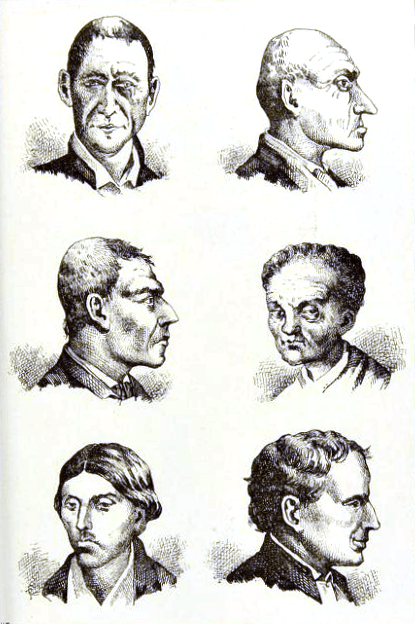theme: phrenology
same_person
The Criminal Man
1876

Flushed with Darwin, Lombroso concluded that criminals are born, not made. They are throwbacks to our caveman or monkey past. This fact was proven by anthropometry practised in jails. The state gladly provided the results of beheadings. To these empirical studies Lombroso added the observation that criminals are often epileptic. He deduced that epilepsy is also atavistic. This is confirmed by the fact that criminals are epileptoid. Abnormality had a scientific basis. Criminals were a race apart.
(Hacking, 1990)Believing that the study of crime should be scientific, criminal anthropologists labelled themselves the 'positivist school' of criminology. Following Auguste Comte’s philosophy of history, they believed that criminology had earlier passed from the tlieological to the metaphysical stage, which was presently giving way to the positivist stage. In other words, the empiricism and materialism of science were superseding deduction from abstract moral principles in the study of crime. More specifically, the positivists challenged the ideas of the classical school of criminology which dominated legal thinking in Europe. The classical school believed that criminals exercised free will when committing crimes. The positivists rejected the doctrine of free will, asserting that all human action was determined by material forces. Since they denied that criminals chose to commit crimes, they believed that the courts should not hold criminals responsible for their actions.
(Gibson, 1982)Gibson, M. S. (1982) ‘The ’Female Offender’ and the Italian School of Criminal Anthropology’, Journal of European Studies, 12(47), pp. 155–165.
Hacking, I. (1990) The Taming of Chance. Cambridge University Press.
Lombroso, C. (1895) L‘homme criminel : criminel né, fou moral, épileptique, criminel fou, criminel d’occasion, criminel par passion : étude anthropologique et psychiatrique. [link]
theme: phrenology
same_person